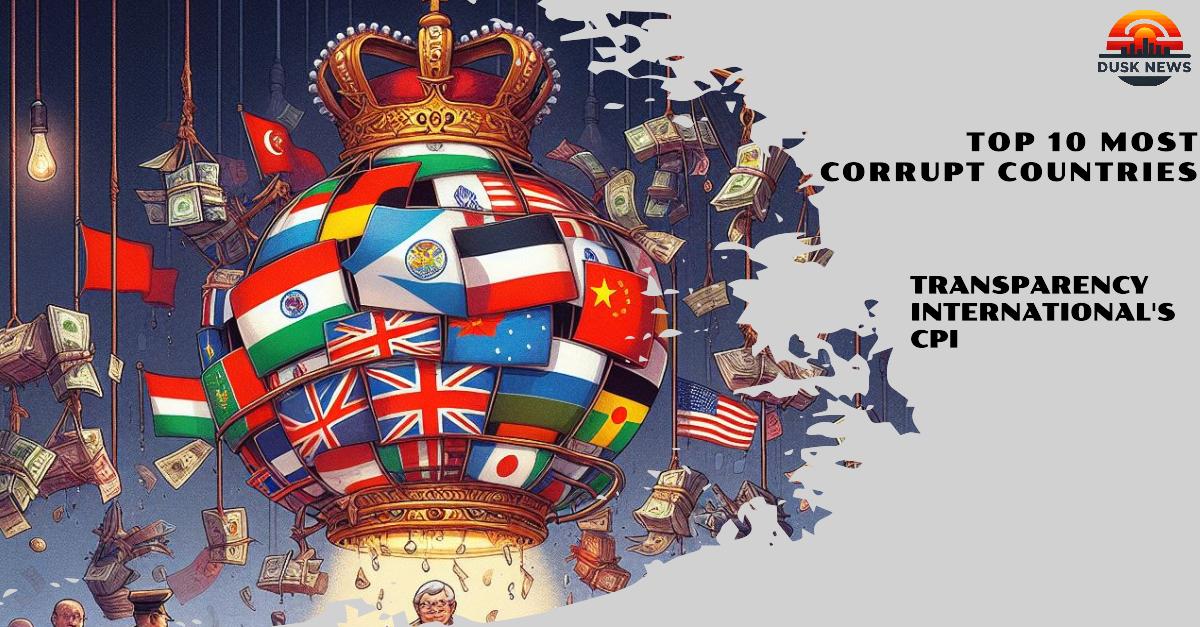|
Getting your Trinity Audio player ready...
|
The Shadow of Corruption: A Look at Top 10 Most Corrupt Countries Struggling with Public Sector Dishonesty
Corruption is a persistent enemy of progress, hindering economic development, weakening democracy, and eroding public trust. Transparency International’s Corruption Perceptions Index (CPI) is a crucial tool that sheds light on this global challenge. Here, we explore 10 countries facing significant corruption issues, according to the 2023 CPI rankings (remember, a lower score indicates a higher perception of corruption):
Read Also: Top 10 Richest People in Pakistan (2024): Unveiling the Titans
1. Venezuela (Score: 13)
Venezuela’s economy has been crippled by corruption, with embezzlement and misuse of public funds running rampant. Weak institutions and a lack of political will to tackle the problem have exacerbated the situation.
2. South Sudan (Score: 13)
Despite rich natural resources, South Sudan grapples with widespread corruption that fuels conflict and instability. The lack of transparency in government spending and resource allocation hinders development efforts.
3. Syria (Score: 13)
Years of civil war have created a breeding ground for corruption in Syria. The war economy fueled bribery and extortion, while essential services remain out of reach for many citizens.
4. Somalia (Score: 11)
Somalia faces a complex challenge in tackling corruption. Decades of instability have weakened institutions, and clan-based politics create vulnerabilities. The lack of security further hinders anti-corruption efforts.
5. Yemen (Score: 14)
Yemen’s ongoing conflict creates a fertile ground for corruption. Humanitarian aid becomes a target for exploitation, while essential resources are diverted away from those in need.
6. North Korea (Score: 11)
North Korea’s authoritarian regime is shrouded in secrecy, making it difficult to assess the true extent of corruption. However, reports suggest rampant bribery and diversion of state funds to support the regime’s priorities.
7. Afghanistan (Score: 12)
Years of war and political instability have contributed to high levels of corruption in Afghanistan. Weak rule of law and a lack of transparency in government contracting create opportunities for abuse.
8. Equatorial Guinea (Score: 14)
Despite vast oil reserves, Equatorial Guinea’s wealth is concentrated in the hands of a few, while the majority of the population lives in poverty. Corruption enriches the elite at the expense of development.
9. Libya (Score: 17)
Libya’s political instability following the 2011 uprising has fueled corruption. Militias and armed groups have exploited the power vacuum, engaging in bribery and extortion.
10. Haiti (Score: 17)
Haiti’s history of political instability and natural disasters has created an environment conducive to corruption. Weak institutions and a lack of accountability hinder efforts to combat graft.
It’s important to note that the CPI is based on perceptions, and the actual situation in each country may be more nuanced. However, it serves as a valuable starting point for understanding the global corruption landscape. By acknowledging the problem and holding leaders accountable, we can work towards a future where public services function effectively and resources reach those who need them most.
What can be done?
Transparency International offers recommendations for tackling corruption, including strengthening institutions, promoting open government, and empowering citizens to hold their leaders accountable. By working together, we can build a world where corruption is the exception, not the norm.
This blog serves as a starting point for further exploration. Transparency International’s website offers detailed reports on each country mentioned, providing a deeper understanding of the specific challenges they face. Let’s continue the conversation and work towards a brighter future free from corruption.

